
Plenty of titles in this industry become victims of their success. Few ever become such cultural hotbeds that raise the bar, challenge the medium, and become such a fuel for controversy like the legacy of the famed Naughty Dog’s The Last of Us Part II. Originally released on PS4 mid-2020, it was coming hot off the heels of its PR nightmare that included comprehensive footage leaking of its gameplay and story, excessive fan backlash ranging from gender politics to death threats on the crew, sensationalist media concerns of its ultra-violence, and the burnout developers and crew on a crunch that left so many staff to leave Naughty Dog afterwards.
And then there’s the story. The audience and critical reception to the sequel of the story that has been heralded as the gaming medium’s finest is still an emotionally charged divisive debate for fans and critics alike and is no doubt still felt today (and might get reawakened) especially in the wake of the new second season of its critically acclaimed HBO adaptation.
Remade, Remastered, Repriced, Reignited
The notion of remaking The Last of Us Part 1 for PS5 (and subsequent PC port) was then met with plenty more controversy and a feisty cultural discussion on what qualifies a worthy remake when it was already remastered for the PS4 and demanded the full price tag of a brand-new title built from the ground up.
Fast forward to 2025, and The Last of Us Rematsered Part II has now made its way over to the PC, over a year after its PS5 release, for Steam on Windows from Naughty Dog PC optimising collaborators, being Iron Galaxy Studios, responsible for The Last of Us Part 1, Uncharted: Legacy of Thieves Collection, and Crash Bandicoot 4: It’s Anout Time on the PC, as well as Nixxes Software, who helped with Ghost of Tsushima, Horizon Forbidden West and Ratchet & Clank: Rift Apart on PC too.
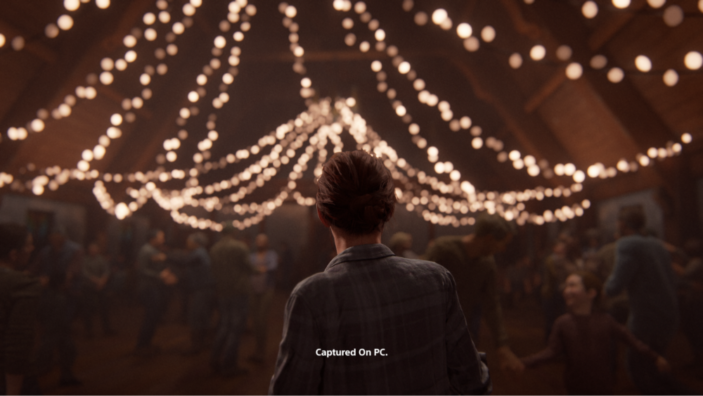
This PC release boasts full controller support for Xbox and the PlayStation 5 DualSense, including its vibrating haptic motors and semi-holding triggers, which make for seamless plug-and-play in the Steam interface. HDR support is also included, which goes a long way with how the volumetric lighting and shadows add to the environmental storytelling and general sense of atmosphere that informs the gameplay in every gritty post-apocalyptic encounter.
A slew of other PC-centric features include:
-
Ultra-wide display support
-
PC-centric graphical fidelity
-
Graphic Upscaling Technologies including NVIDIA DLSS 3, AMD FSR 3.1 & 4.0 and Intel XeSS
-
DirectStorage Support
-
Mouse and Keyboard Mapping
-
PlayStation overlay and trophy support
-
Extra maps and characters in the No Return game mode
-
Steam Deck Verified
Working Hard or Hardly Working?
The gaming rig used for this review, with over 30 hours of playtime, is just ever so slightly higher than the recommended system requirements.
Sporting an AMD Ryzen 7 3700X CPU, Radeon 5700 XT graphics card, 32GB of G.Skill Trident RAM, and a Samsung 970 EVO SSD, this game ate all that up at 1440p with all settings set to high. If you go below high, you could be looking at graphics, especially light bouncing and sub-surface scattering, that are subpar to the original game on PlayStation 4.
With the latest AMD graphics drivers at the time of writing being 25.3.2 and Windows 11 on its infamous but latest 24H2 and cumulative updates, the game’s performance sits at an average of 60 FPS in the linear smaller sections and around 45 FPS in the more semi-open areas. My game version at the time of writing sits at Patch 1.1, post-day one patch.

It’s important to note that these FPS numbers are only present when you have enabled the upscale method being AMD’s FSR 3.1.3, and Frame Generation is turned OFF instead of ON. If you enable Frame Generation whilst having the upscale method stay FSR, things get weird. You sit at around 90-100 FPS on average but have various strange visual artefacts across the screen that vary in each game boot.
With the frame generation enabled, you definitely start to see a more brutal version of the dynamic resolution-making at play, with more varied lower textures at some points whilst more focused and story-driven objects near your camera pop more in detail. It’s with these settings also that I experienced three crashes to desktop during key high-intensity moments of gameplay, followed by AMD asking if I want to send a crash report.
On the bright side, you get a slew of graphic settings that are everything and the kitchen sink in terms of graphic fidelity fine-tuning. GPU and CPU utilisation seemed fairly high across the playthrough. There are stutters and frame-time hitching found specifically when upcoming new areas are coming up for the player despite the shader compilation occurring during level load. Rare but brief 0 FPS stalls of 1-3 seconds can also occur during key moments when you’re sensing your character coming up to a new level of geometry.
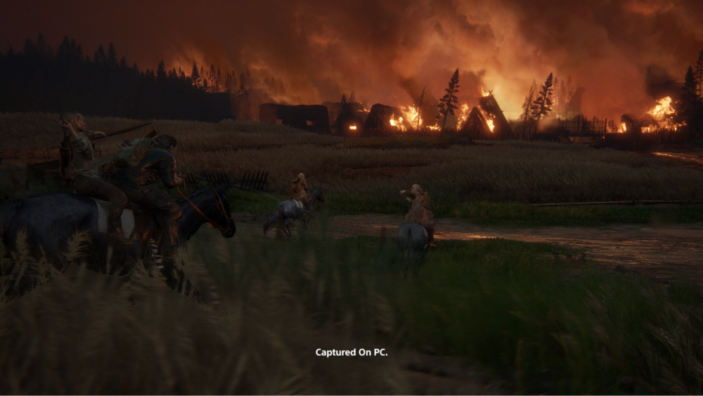
This is especially apparent in the few semi-open world areas found in the game and is quite perplexing, given the original game was built for the PS4’s 12-year-old AMD Jaguar CPU.
A lot of these issues remain after the post-day-one patches. Hopefully, future updates will alleviate a lot of these issues, especially with Nixxes Software supporting Iron Galaxy with the plumbing.
It’s a Brave New World, But Not Really
The breadth of gameplay for The Last of Us Part II Reamstered is almost as divisive as its story (which we’ll come to), and that remains pretty consistent in this PC port of the PS5 remaster. Naughty Dog’s third-person cover shooter mechanics are the most well-oiled they’ve ever been. Now, in Part II, being able to go prone and dodge incoming melee attacks does help shake things up against your foes, especially when you crawl in areas of high grass or hide underneath a vehicle, taking pot shots. The enemy AI does flush you out, though, and if you’re not careful, you will get flanked by any enemy you face.
You’ll face two primary factions of humans that hate your guts. One faction, named the Washington Liberation Front (WLF), commands and works alongside attack doggies that follow your smell, making your cover pretty useless. The other is a religious cult that coordinates with each other via whistling and gets more primal, shooting arrows that, if you don’t pull out after being hit, will cause ongoing damage. Both factions have different modus operandi in how they choose to hunt you down.
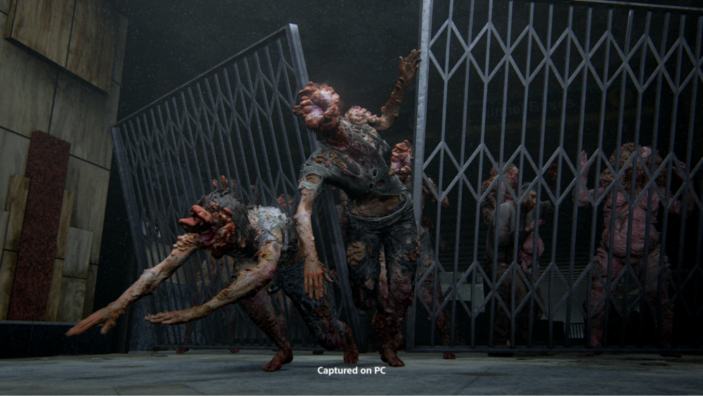
On the infected side, you’ve got a new enemy type bridging between Clicker and Bloater called Shamblers that love spewing foggy acid, corrosively burning your health if you’re close. Stalkers are now fully implemented and love hiding in your vicinity, pouncing on you when you’re not looking.
Killing your enemies also makes you feel like you’re killing their friends and family. Nothing makes you feel more awkward than lining up a headshot with your bow on a dude only for his mate to shout “EARL???” as if you killed his bestie since high school. It’s a microcosm of the cycle of violence theme that the game’s infamous story wants you to feel on every level.
Once you finish the story, you can go back and do it all over again with a speedrun mode that includes higher difficulties and tracked times, as well as a Guitar Free Play mode that lets you play music with extra unlockable instruments.
Time Does Not Heal All Wounds
The story of this game could very well be the most controversial video game narrative in recent memory. Unlike past notable story-driven games like Mass Effect 3, Bioshock Infinite, or Spec Ops: The Line, where their controversies surrounded a central beat of twist or shift in the story, The Last of Us Part II Remastered’s systematically and continuously manipulates and misdirects the players’ expectations and agency since the game’s pre-release marketing across the entire game’s playthrough.
I can’t elaborate much more without spoiling the story, but it’s something you should experience for yourself.
It’s certainly a hefty revenge tale. There are noble pursuits from the creators’ own words on how they wanted to illustrate the complexity and toxicity grief and trauma can be. The human capacity for grief and trauma is messy to say the least. The self-sabotaging and purgatory actions we humans keep putting ourselves through don’t always make a lick of sense.
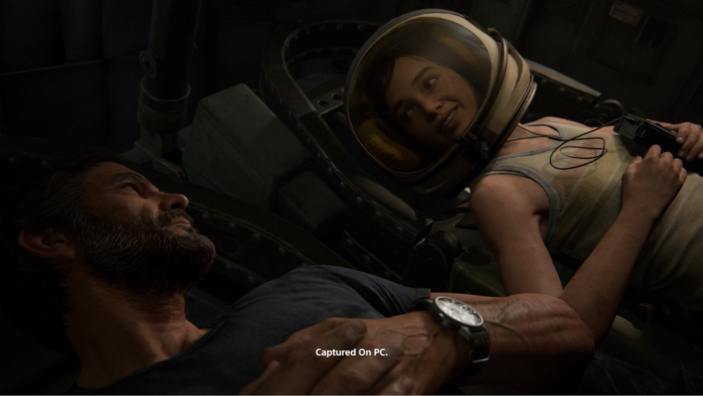
But does that make for a compelling or satisfying story? Does that warrant so many times you feel used by the game, experiencing the cognitive dissonance and discomfort from the violent choices you’re making in-game? Your answer to those questions will indicate how fulfilling you’ll find the game’s 25-to-30 hour-long story.
The game’s director and writer, Neil Druckman, mentioned many times across various behind-the-scenes content one notable thing – creating misdirection to the player to surprise and emotionally impact them. One does wonder how many times subverting expectation is done for a meaningful plot and how many times it’s done for the sake of its theatrics or shocking the audience into a new voyeuristic realm of ludonarrative mythology.
Is weaponising empathy and denying catharsis even an ethical tool of screen storytelling, especially in this interactive medium?
The Goods at a Glance
If you’re into these behind-the-scenes questions and the craftsmanship of making such an ambitious game, you’ll love the amazing featurettes and other behind-the-scenes extras you get as part of this game.
A bevy of behind-the-scenes content accessible in-game includes:
-
Feature-length documentary: Grounded II: Making The Last of Us Part II
-
Trailers
-
Developer, cast and crew commentary on every ingame cinematic from the campaign
-
Concept Art Gallery
-
Model Viewer
-
Lost Levels
A gaming equivalent of a movie’s deleted scenes, Lost Levels allows you to play through levels of the game that didn’t make the final cut, with in-game developer commentary as you traverse the level. With it not having made it in the cut, you’ll see graphic placeholders, incomplete animations, and zilch voice acting for many lines of dialogue in text form. It’s all quite fascinating, playable, and insightful, with three very different levels to choose from.
With an industry infamous for its hardships, it’s refreshing to have content like this that can inspire and inform the game makers of tomorrow and pay tribute to the artistic process behind these titles. More games should take note and include features like this.
Survival of the Fittest
One of the most refreshing and fun surprises of this game is the single-player rogue-like survival mode named No Return. In it, you choose to play characters like Ellie from the story (more characters are unlockable with their playstyles and abilities) and then get them through round-based survival matches against different categories of all the enemies you faced in the story.
The points you gain as you complete each round go to the currency you’ll use to unlock new weapons, items and upgrade existing gear and abilities. This can be done in a safety hub between each round where you have access to workbenches, gear, etc.
This game mode did not feel like a pushover add-on designed to get more playtime out of you. There is a remarkably rewarding content progression you unlock as you play more and more rounds, which isn’t just cosmetics but includes characters, gambits, maps, levels, and different scenarios for each survival round. Two new unlockable No Return characters are included in this PC version, including Marlene, who starts off with an assault rifle, while others start with simple sidearms, as well as four new unlockable maps to challenge.
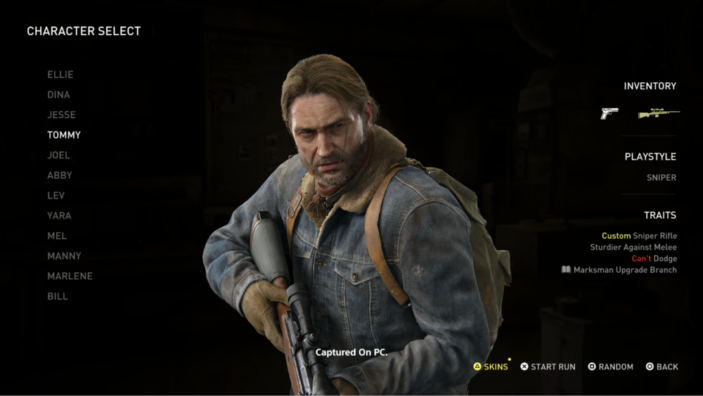
Different characters specialise in different play styles, where Lev starts with a bow, specialising in stealth, while Abby and her buff arms favour more melee attacks that gain you health upon each kill. Though I am of the camp that the third-person cover shooting can be quite repetitive and is much more of polishing rather than reinventing any wheels. But gosh darn it does it demonstrate a terrific showcase of just how invigorating, brutal, and sublime the violence of action can be.
Naughty Dog has proved themselves again by injecting the most fluid real-to-life animations and motion capture into every action your character does in-game. Every kill feels heavy and earned, with many rewarding ways to go about it, whether you’re stealthy ora little more trigger-happy.
Final Thoughts
Remarkably, this franchise of only two games and other light transmedia content has been the cultural zeitgeist talk of the town for well over a decade, even well before the HBO show hit our shores, now releasing its second season. What started as a heartbreaking, timeless tale of father and daughter with a trolley problem in the first game has morphed into a very different game for Part II if you care about its characters.
As a game on its own, this third-person action game refines a lot of what you loved in the first game and doubles down on the horror and violence of its predecessor. Translating all of that into a PC port of a PS5 remaster of a PS4 release would only be worth buying if you haven’t experienced Part II before.
The performance issues and stability are not as abhorred as Part 1’s release on PC. At the time of writing, the game can still be a gorgeous graphical showcase of what the current generation is capable of if you have above-average specs on your computer that have suspiciously more grunt than they need to have if you want to go above 1080p.
It remains playable but with spotty frame rate dips across the board, yet it is hard to stomach for a release’s full price tag in these tough economic times. For better or worse, this game’s artistic merits are a marvel for the medium and will be discussed for years to come. Experiencing it all in its PC splendour can only improve in performance as more patches are implemented.
The Last of Us Part II Remastered is both a technical marvel and a philosophical minefield. Whether you love or loathe it, you feel it—and that’s rare.
![]()
![]()
![]()
![]()
![]()
THREE AND A HALF STARS (OUT OF FIVE)
Highlights: Visceral combat paired with industry-leading animation and a story that hits hard when it counts.
Lowlights: That same story can leave you feeling manipulated, with emotional payoffs that lack closure; Performance issues on PC still linger.
Developers: Naughty Dog, Nixxes Software, Iron Galaxy Studios
Publisher: PlayStation Studios
Platforms: Windows PC (Steam, Epic Games Store), PlayStation 5
Available: Now
Review conducted on PC with a release code provided by the publisher.
You can check out our Season 2, Episode 1 review of HBO’s The Last of Us here.
